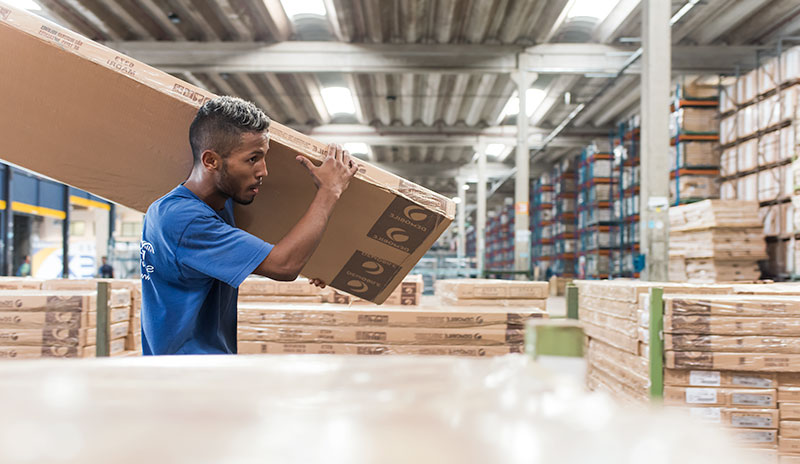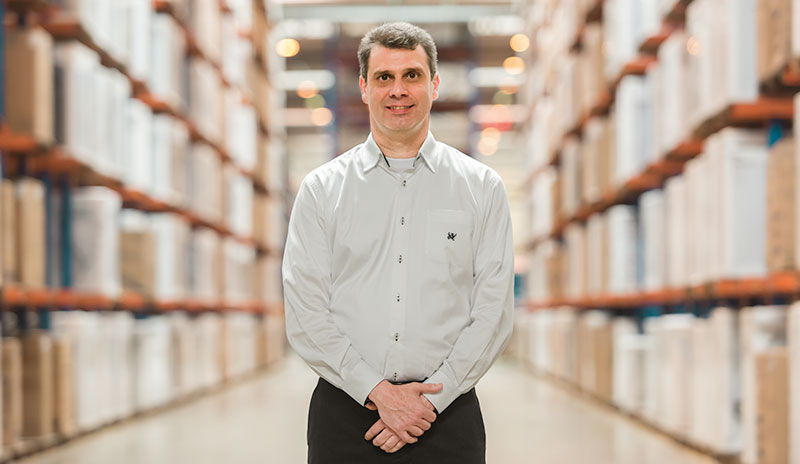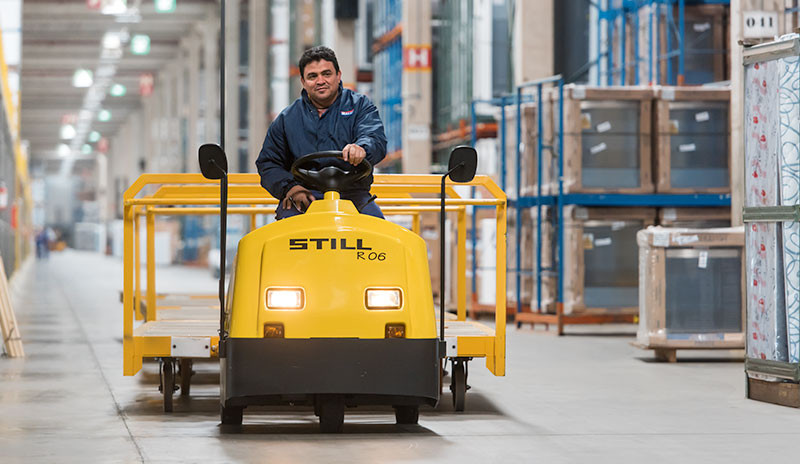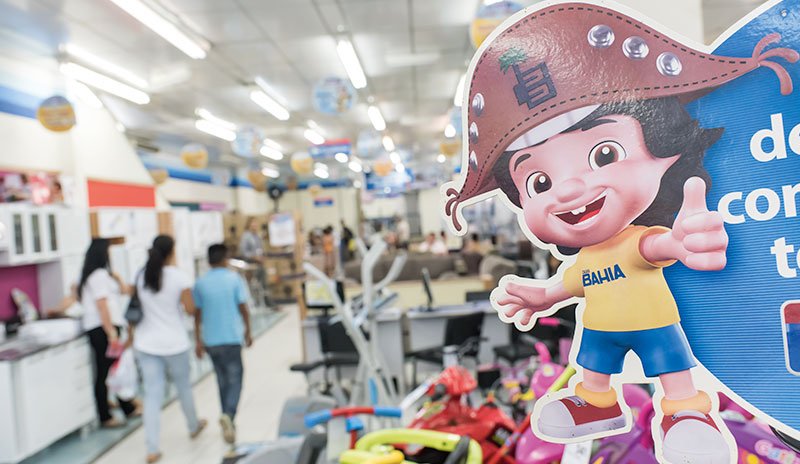Synergetic.
Located near São Paulo, South America’s largest warehouse resembles a beehive. Productivity is a very valuable asset here. Smooth-running logistics calls for highly sophisticated integration – as provided by the KION Group’s modular and platform strategy, which leverages the global synergies of its brands.
Located near São Paulo,
South America’s largest
warehouse resembles a beehive.
Productivity is a very valuable asset here.
Smooth-running logistics calls for highly
sophisticated integration – as provided
by the KION Group’s modular and platform strategy,
which leverages the global synergies of its brands.
From above, it looks a bit like a scene from a funfair. Dozens of men stand on warehouse trucks. They rattle through the aisles and zoom around corners, their brakes squeaking. The workers, dressed in blue and yellow overalls, steer their order pickers with the same intensity as small boys in bumper cars – and they appear to be having just as much fun. But here in the Centro de Distribuição, instead of ramming into each other, they load up incoming goods such as fridges, mattresses and gas ovens and transport them to their destination.
The Centro de Distribuição, or CD for short, is arranged in a giant L amid gently rolling hills in Jundiaí, just 50 kilometres from the Brazilian metropolis São Paulo. With a footprint of 160,000 square metres – the size of more than 20 football pitches – it is the biggest goods distribution centre in South America. From half past five in the morning, suppliers’ trucks bring in goods from production sites across the region, and by three o’clock the following morning approximately 6,700 consignments will have been sent on their way from Jundiaí. In this huge country, it’s not uncommon for them to travel the same distance as from Paris to Moscow.
960 people work here in three shifts; seven days a week and around the clock. Using 163 order pickers, 87 forklift trucks and eight tow tractors, all made by the KION brand company STILL, they move everything from bicycles and hi-fis to flat-pack furniture and pressure cookers. In a precision-planned operation, the goods that arrive at the warehouse end up on the opposite side of the building, where individual consignments that have been sorted by zip code are dispatched to dealers, shops and homes.
By the time the trucks arrive, address labels have been produced for each item, specifying precisely where in the warehouse each package, fridge or sofa is to be stored. At peak times, such as in the run-up to Christmas or Mother’s Day, dozens of trucks wait outside for their turn. The warehouse is packed right up to the ceiling. “Sometimes, 35,000 TVs arrive here in three days that will then be sold in the three days after that,” says Marcos Antônio Spoldari, who coordinates the incoming goods operation.
From peddler to entrepreneur
Marcão, or “big Marcos” as his team respectfully call him, started work more than 30 years ago as a casual worker at Casas Bahia, and he knew the company’s founder personally – the Polish immigrant Samuel Klein. Klein started out as a peddler, before opening his own shop. At first, he tapped into the potential of customers from the lower rungs of society. He allowed them to pay in up to two dozen instalments, even if they didn’t have a bank account. Samuel Klein gave them access to consumer goods that they could previously only dream of and he achieved commercial success on an unprecedented scale. Before his company was merged with another in 2009, it was turning over around 14 billion reais a year. Today the Casas Bahia stores are part of the Via Varejo Group, one of the world’s biggest retailers of electrical goods and household appliances.
Huge savings thanks to automation
In 1997 Klein had the Centro de Distribuição built in Jundiaí, which now dispatches goods valued at around six to seven million reais on a daily basis. Its processes are continuously being perfected. “We want to automate as much as possible – in goods inward we are still using lots of manpower, and that’s hugely unproductive,” says Francisco Tarosso, head of the CD. The latest acquisitions are tow tractors with multiple trailers which make it easier to unload and distribute goods. They buzz up and down the 530-metre-long warehouse, loading and unloading goods at pre-determined points like a bus picking up and dropping off passengers. This ‘bus stop’ system reduces the volume of traffic and saves space and manpower.
The electric motors hum, the rubber wheels squeak on the concrete floor, the forks and lift masts clatter endlessly. Without order pickers, forklifts and tow tractors the CD in Jundiaí would come to a standstill. “So that logistics can keep pace with productivity here, it’s particularly important that the devices are low-maintenance and don’t break down,” says Edgard Liberali Filho, the centre’s logistics director. “Almost all the products we use here are made by STILL. Some of them have been running reliably for 15 years.” With a smile, he adds: “We just have to repaint them from time to time, because some of the gaps between the metal shelving units are so narrow that it’s impossible to avoid scratches!”

